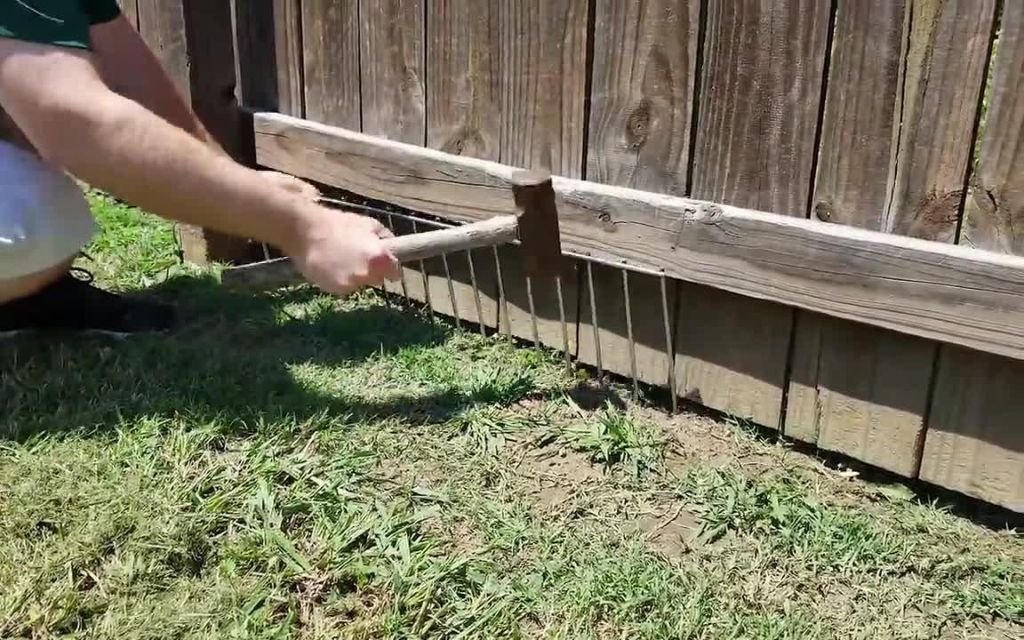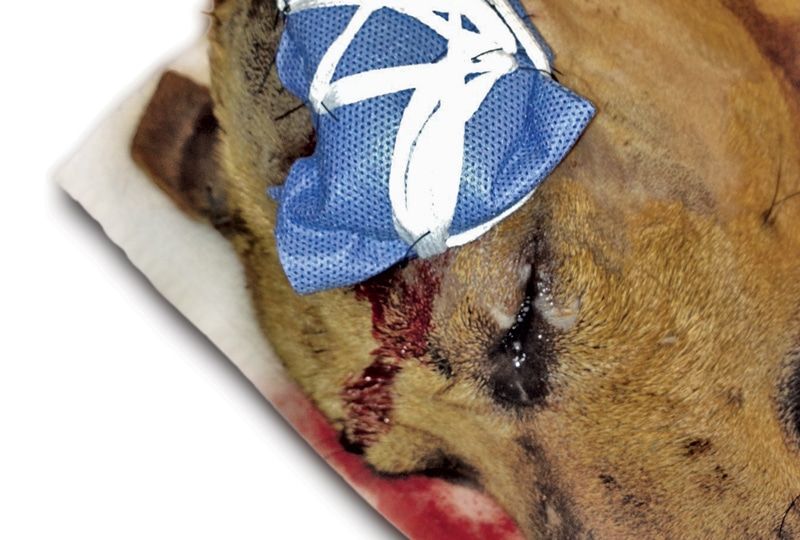Introduction
The chilling sight of a fox attacking a small dog may make some pet owners wonder if their own beloved pup is vulnerable. With their sharp teeth and claws, foxes can certainly injure or even kill a small dog under the right circumstances.
This article will examine whether foxes pose a serious threat to small dogs under 20 pounds. We’ll look at documented cases of fox attacks, a fox’s natural behavior, typical weights of foxes and small dogs, preventive measures owners can take, how to react during an attack, and first aid for injured dogs.
While fox attacks are relatively rare, they do sometimes occur, especially in areas where foxes are abundant. Being informed and vigilant can help prevent tragedy for both pets and local wildlife.
Foxes’ Hunting Abilities
Foxes have a number of natural abilities that make them effective hunters and predators. Their sharp teeth and claws are well-suited for catching and killing prey animals. Foxes have canine teeth designed for grabbing and piercing, along with carnassial teeth in the back of their jaws for shearing meat 1. Their non-retractable claws provide traction and a firm grip on the ground while hunting.
In addition to physical attributes, foxes are very quick and agile animals. They can run up to 30 mph and jump several feet vertically to pounce on prey from above 2. Their lightweight bodies and bushy tails aid their ability to make quick turns and change direction rapidly. This agility gives them an edge when chasing and capturing fast-moving animals.
Foxes also have strong predatory instincts that drive their hunting behaviors. They employ a “mousing jump,” slamming their forepaws down to surprise and immobilize small rodents. Foxes hunt in a trotting gait, which lets them patrol large sections of their territory while staying alert for prey 3. Their excellent senses of smell, hearing, and night vision further enhance their ability to locate and identify potential prey.

Typical Weight of Foxes
Red foxes typically weigh between 7 and 15 pounds, with the average weight being 10-11 pounds, according to the Red Fox Size and Connecticut Department of Energy and Environmental Protection. Male red foxes, known as dogs, tend to be slightly heavier than females, known as vixens.
Gray foxes are smaller, weighing 7 to 13 pounds on average, according to wildlife experts. The gray fox is the only canid that can climb trees, which allows it to forage and hide from predators in the forest canopy. Overall, most fox species weigh between 7-15 pounds fully grown.
Typical Weight of Small Dogs
Small dogs typically weigh under 20 pounds. Some popular small dog breeds under 20 pounds include:
Yorkshire Terrier – an average of 7 pounds (Woman’s Day)
Toy Poodle – an average of 6-9 pounds (Country Living)
Pomeranian – an average of 3-7 pounds (Dog Breed Info)
Chihuahua – an average of 2-6 pounds (AKC)
Maltese – an average of 4-7 pounds (AKC)
Other popular small dog breeds under 20 pounds include the Papillon, Brussels Griffon, and Cavalier King Charles Spaniel.
Documented Fox Attacks on Dogs
While fox attacks on dogs are rare, they do occasionally happen. Studies show that smaller dogs under 20 pounds are at the highest risk. According to wildlife experts, there are around 230 reported cases per year of foxes attacking cats and dogs in Britain alone (Source). In the majority of incidents, small dogs were the victims. The injuries inflicted were often minor bites or scratches, but sometimes resulted in more severe wounds. Fatal attacks are very uncommon, though small puppies or kittens can be more vulnerable.
One study examined 100 random cases of fox attacks on outdoor pets in Britain. It found that 78% of the attacks were on cats and 22% were on dogs. In the attacks on dogs, 62% of the dogs weighed less than 11 pounds. The researchers noted that larger dogs are typically less vulnerable to fox attacks, but attacks on medium and large dogs can still occasionally occur (Source).
While rare in occurrence, fox attacks do pose a risk for small dogs and puppies under 20 pounds if they are left unattended in yards. Supervision and prevention measures should be taken to protect them.
Preventive Measures for Dog Owners
There are several steps dog owners can take to reduce the risk of a fox attack:
Supervision When Outdoors
Whenever dogs are outside, especially small dogs under 20 pounds, owners should stay with them and keep them within sight. According to the Humane Society, leaving pets unattended gives foxes and other wildlife more opportunity to approach without being noticed. Supervising dogs during bathroom breaks, playtime, and walks reduces likelihood of surprise fox encounters (source: https://www.humanesociety.org/resources/what-do-about-foxes).
Adequate Fencing
Yards should have fencing sunk into the ground or with a rolled-edge at the bottom to prevent foxes from digging underneath. Fences should be at least 5-6 feet tall without any gaps foxes could squeeze through. This keeps foxes away from dogs in the yard and deters them from denning nearby (source: https://pawsafe.com/blogs/dog-behavior/do-foxes-attack-dogs).

Animal Deterrents
Sprinkling predator urine granules from coyotes, foxes, or bobcats around the perimeter of your yard can help deter wild foxes from approaching or establishing dens nearby. Motion-activated lights and sounds may also startle foxes away (source: https://www.lifewithdogs.tv/will-a-fox-attack-a-dog-on-a-leash/).
How to Break Up a Fox Attack
If you encounter a fox attacking your dog, there are a few things you can do to try to break it up and keep your dog safe:
Make loud noises – Shout, yell, clap your hands, or use noisemakers like an airhorn or whistle. The sudden loud noises may startle or scare the fox long enough for your dog to break free.

Throw objects – Harmlessly throw sticks, small rocks, cans, or other nearby objects toward (not directly at) the fox. This distraction may interrupt the attack. Just be careful not to inadvertently strike your dog.
Use spray deterrents – If you have pepper spray, citronella spray, or other fox or wild animal repellents on hand, spray some near the fox’s face/head area. Avoid spraying it directly in the fox’s eyes. The strong smell can repel foxes.
Be persistent and use different deterrents until the fox retreats. Stay between the fox and your dog if it’s safe to do so. Comfort your dog and get them away from the area as soon as the fox leaves.
First Aid for Injuries
If your dog suffers injuries from a fox attack, it’s important to provide first aid as soon as possible. Here are some steps you can take:
To stop bleeding from wounds, apply firm pressure on the area using a clean towel or piece of cloth. Elevate injured limbs above heart level if possible. According to the American Kennel Club, bleeding should stop within 10 minutes. If profuse bleeding continues, seek emergency veterinary care immediately [1].
Treat bites and scratches by flushing them with water or a saline solution to remove dirt and debris. Gently clean around the wounds using mild soap and water, but avoid removing any scabs that have already formed [2]. Apply antibiotic ointment and wrap or bandage the area.
Watch for signs of shock, like lethargy, rapid heart rate, pale gums, shivering. Keep the dog warm using coats or blankets, but don’t overheat. Let them rest, and avoid stimulating or stressing them further. Give the dog access to water if they can drink normally.
Seeking Veterinary Care
If your dog suffers injuries from a fox attack, it is crucial to seek veterinary care immediately. Even minor bites and scratches can lead to dangerous infections if left untreated. Here are some key reasons to take your dog to the vet after a fox encounter:
Closure of serious wounds – Puncture wounds and lacerations from a fox’s teeth should be evaluated and closed up properly to avoid complications. The vet will likely clean the wound thoroughly and stitch up any significant lacerations.

Antibiotics for infection – Dog bites often become infected, so your vet will likely prescribe a course of antibiotics. These medicines will help prevent wound infections and potential sepsis. Prompt antibiotic treatment is vital.
Rabies prevention – Since foxes can carry rabies, the vet will assess if your dog needs the rabies vaccine or a booster shot. Getting the rabies vaccine quickly after exposure may prevent the disease from developing. Your vet may also recommend quarantining your dog for a period to check for rabies symptoms.
In addition to these treatments, the vet may prescribe pain medication to keep your dog comfortable during recovery. Be sure to follow all your vet’s discharge instructions carefully after a fox attack.
Conclusion
To recap, foxes are known for their hunting skills and although they are smaller than many dogs, they can still pose a threat. Small dogs under 20 pounds are within the typical weight range that a fox may prey upon. While documented attacks are relatively rare, they do occasionally happen, so dog owners should remain vigilant. Preventive measures like keeping dogs on a leash and securing the yard can help minimize risk.
If an attack does occur, making loud noises and spraying water can help break it up. Seek immediate veterinary care for any injuries, which may include puncture wounds and scratches. While a fox encounter can be scary for dog owners, timely intervention and preparation can help keep pets safe.